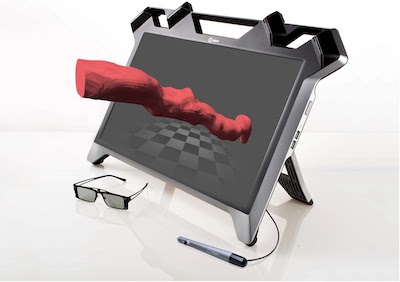Our most recent blood flow simulation prototype was built using smoothed-particle hydrodynamics (SPH), an accurate and conceptually simple model. SPH is a Lagrangian, meshfree, particle method, and is an active research area in many disciplines. The fluid is discretized into a set of particles, which act as interpolation points for its various properties. These properties are interpolated by examining every particle’s “neighbourhood”, all nearby articles within a fixed radius. This Lagrangian formulation of the method provides some key benefits over previous Eulerian systems; conservation of mass is effectively handled by the nature of the discrete particles, little needs to be known about the problem domain before run-time, allowing the domain to deform or handle interaction. This is particularly beneficial to our implementation use of real patient data, taken from medical scanning techniques.
SPH’s main complication is the computational cost, especially when reaching extremely large particle quantities. The most accurate or visually appealing SPH systems typically take several hours to render. However, the treatment process involved for acute cardiac events is time-critical, therefore, we aim to have our system perform at interactive rates. This becomes a careful balancing act, between performance, accuracy, and visual fidelity. Modern techniques and hardware have accelerated the method in recent years. For instance, our current prototype’s implementation takes advantage of the parallel computational power of modern GPUs.
The second major facet of our system, involves the virtual reality (VR) implementation. We have integrated the zSpace system, a commercial 3D monitor which includes head tracking and stylus interaction, see Figure 1. This VR component delivers a new level of interaction with the simulation, allowing clinicians to naturally see alternative perspectives, and manipulate geometry to create rigorous scenarios, potentially developing their understanding during their preparation for an intervention. The behaviour could be replicated on head-mounted displays, such as the Oculus Rift, however we believe that such invasive VR may not not be conducive to a clinician’s work environment.
